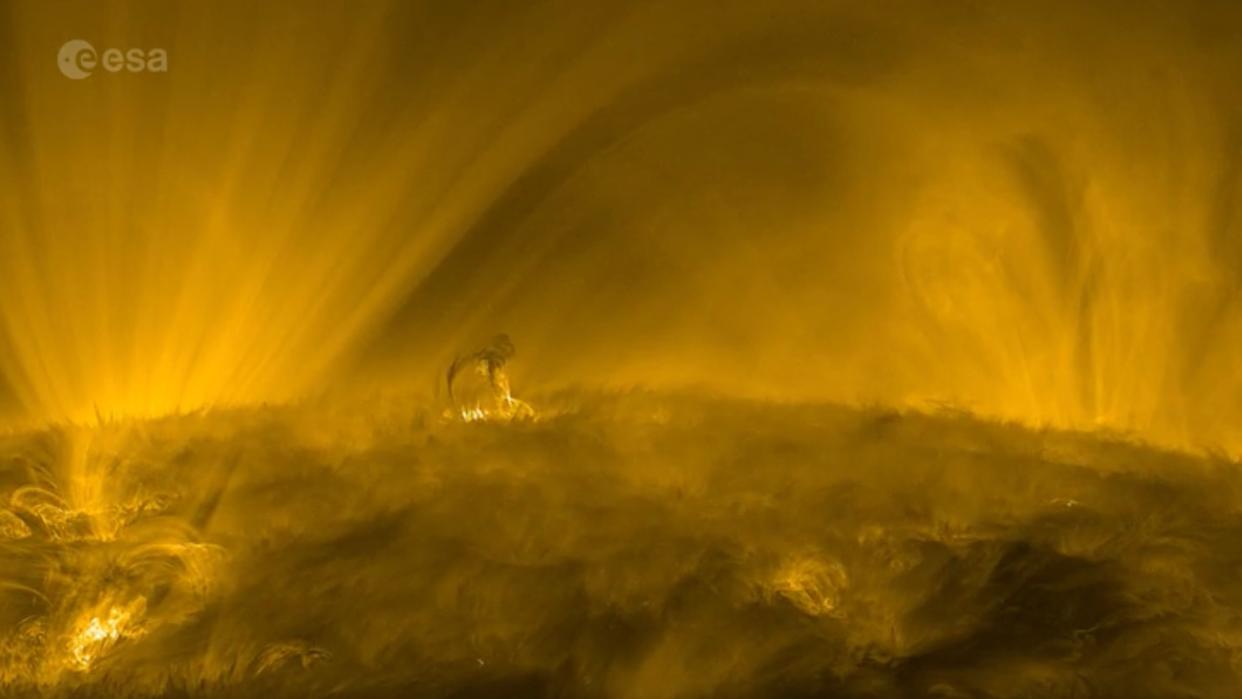Space photo of the week: A planet-size explosion rocks the sun's 'mossy' corona

What it is: A fiery landscape on the surface of the sun
Where it is: About 93 million miles (150 million kilometers) from Earth
When it was released: May 2, 2024
Why it's so special: A golden meadow stretches to the horizon, complete with fluffy moss, distant rainfall — and gargantuan plasma explosions towering larger than Earth itself.
It's just another day on the sun.
Captured in September 2023 by the European Space Agency's (ESA) Solar Orbiter, this close-up view of our star shows the chaotic transition zone between the sun's chromosphere and corona, the two outermost layers of the sun's atmosphere. Brighter areas of the image (also available as a short video) represent temperatures of 1.8 million degrees Fahrenheit (1 million degrees Celsius), according to ESA, with cooler regions looking comparatively dark as they absorb radiation.
This golden panorama is a miniature gallery of extreme solar phenomena. Fuzzy, lace-like features in the bottom left of the image are "coronal moss" — structures that form at the bases of gigantic plasma loops that ride the sun's magnetic-field lines high into the solar atmosphere.
Related: Eclipse from space: Paths of 2024 and 2017 eclipses collide over US in new satellite image
Near the horizon, towering structures called spicules dance and wave, reaching thousands of miles above the sun's surface. A dark region hovering over the middle left of the footage shows coronal rain — dense blobs of plasma tumbling back down to the sun after rising high on coronal loops. And at roughly 22 seconds into the video, an enormous eruption of plasma — stretching taller than Earth — rears its fiery head.
related stories
—Space photo of the week: Hubble catches a 'baseball galaxy' with a black hole heart
—35 jaw-dropping James Webb Space Telescope images
—Space photo of the week: Battling black holes pull two galaxies apart
Solar features like these result from disturbances in the sun's tangled magnetic-field lines. Magnetic disturbances become more common near the peak of the sun's 11-year activity cycle, called solar maximum — a period that scientists think may be occurring right now. Even back in September, the ramp-up in solar activity was evident.
Solar Orbiter captured this fiery footage from about 27 million miles (43 million km) away from the sun — or about one-third Earth's average distance from our star, according to ESA. Fortuitously, NASA's death-defying Parker Solar Probe swooped within 4.5 million miles (7.2 million km) of the sun the same day, allowing the two spacecraft to monitor these extreme solar features and measure their radiation output at the same time.

